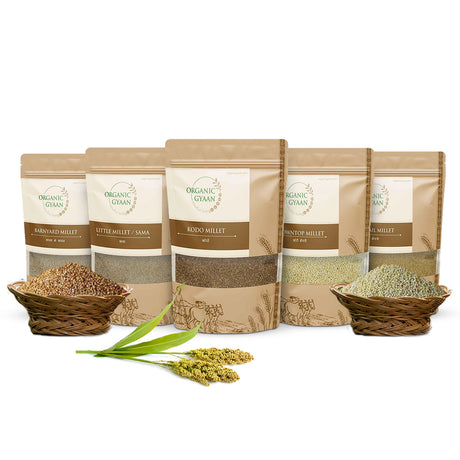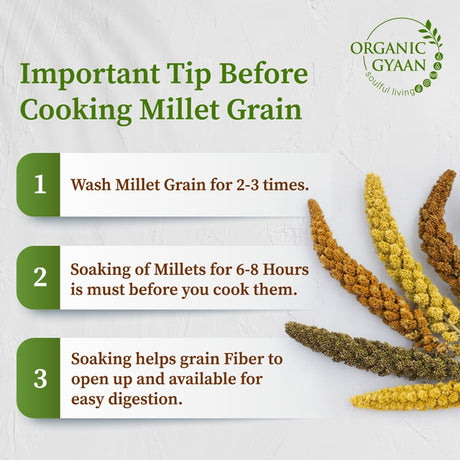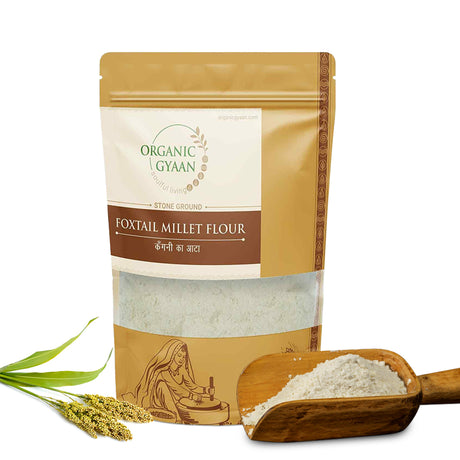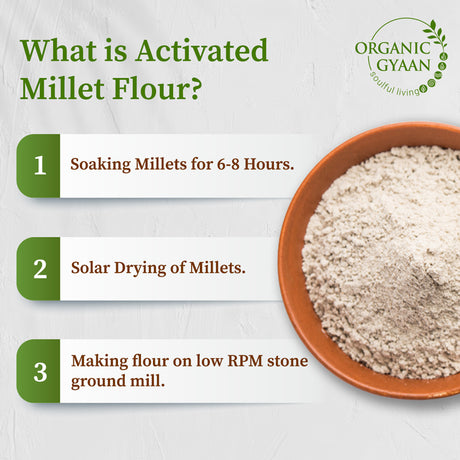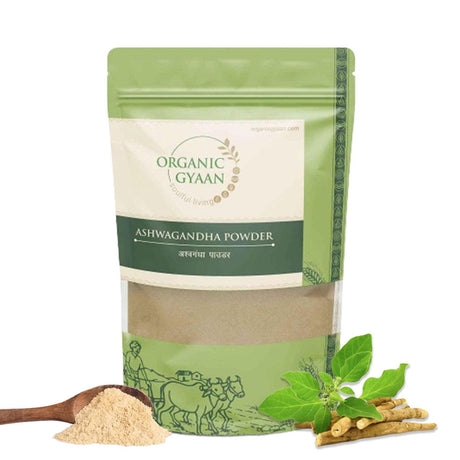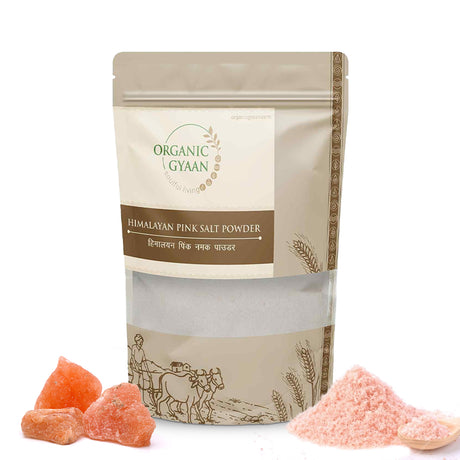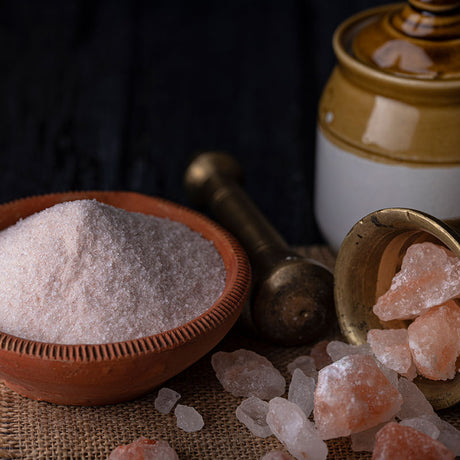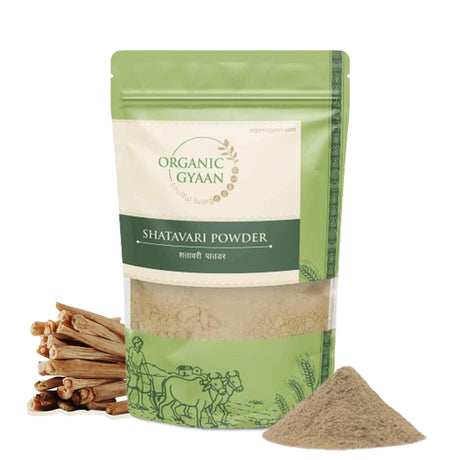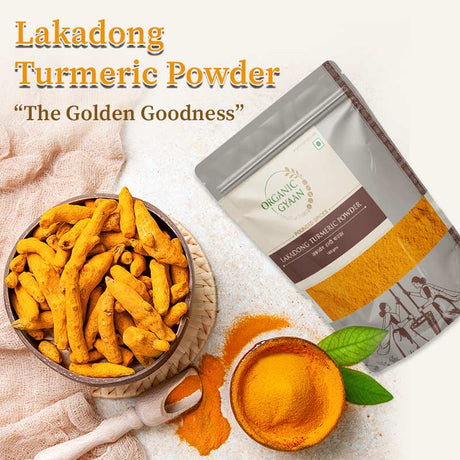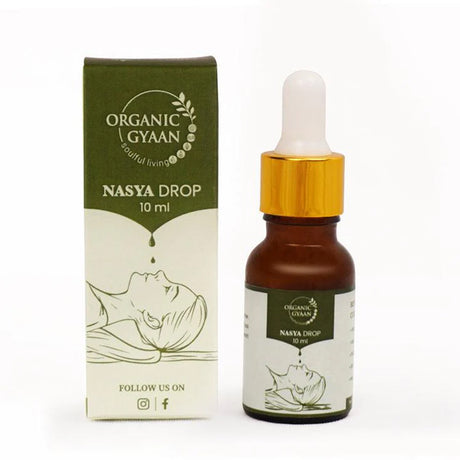Embark on a journey to discover the traditional and modern wonders of foxtail millets, an ancient grain making a nutritious comeback in our kitchens.
Introduction to Foxtail Millets
Foxtail millets, also known as Thinai in Tamil or Kangni in Hindi, have been a staple in Indian diets since ancient times. Known for their resilience and ability to thrive in arid conditions, these tiny seeds pack a powerhouse of nutrients. With an increasing shift towards healthier eating habits, foxtail millets are gaining popularity as a versatile grain that seamlessly fits into modern diets.
Historical & Cultural Context
Foxtail millets have been a part of Indian civilization for thousands of years. Ancient scriptures like the Rigveda mention these grains, highlighting their historical significance. They were a central part of the diet in the times of the Mauryan Empire and have played a crucial role in traditional agricultural practices in states like Tamil Nadu and Karnataka. The use of millets was particularly prevalent among farming communities, who relied on these crops for their robustness and nourishment.
Today, there is a renaissance of interest in these grains as they are recognized for their environmental sustainability, requiring less water and growing well in less fertile soil. This is particularly significant for India, where water scarcity and agricultural sustainability are pressing concerns.
Ayurvedic Perspective on Foxtail Millets
In Ayurveda, millets are recognized for their ability to balance the three doshas—Vata, Pitta, and Kapha. Foxtail millets, in particular, are valued for their light and cooling properties. They are particularly beneficial for calming Pitta and Kapha doshas. Ayurvedic practitioners often recommend incorporating millets like foxtail in the diet to improve digestion and increase energy levels without causing excessive heat or dryness in the body.
In addition, foxtail millets are believed to enhance the agni, or digestive fire, which is crucial for the proper assimilation of nutrients. They are often consumed during fasting periods, allowing the body to detoxify while still receiving essential nutrients.
Modern Scientific and Nutritional Perspective
Foxtail millets are an excellent source of dietary fiber, protein, and essential vitamins and minerals such as iron, magnesium, and zinc. According to the National Institute of Nutrition, Hyderabad, these millets have a low glycemic index, which makes them an ideal choice for individuals managing diabetes [NIN 2022]. Their high fiber content aids in digestion and helps in maintaining a healthy weight by keeping one satiated for longer periods.
A study published in the 'Indian Journal of Nutrition' highlighted the role of foxtail millets in reducing triglyceride levels, thereby reducing the risk of cardiovascular diseases. The presence of antioxidants like phenolic acids and flavonoids further contributes to their health-promoting properties.
Practical Use Cases and Real-life Benefits
In today's fast-paced lifestyle, incorporating foxtail millets into your diet can lead to numerous benefits:
- Weight Management: The high fiber content helps in controlling hunger pangs, aiding weight loss. It is particularly beneficial for those looking to reduce abdominal obesity, a common issue in urban India.
- Diabetes Control: Its low glycemic index helps in regulating blood sugar levels, making it a safe option for diabetics. Regular consumption can significantly reduce the need for insulin spikes, helping manage the condition effectively.
- Heart Health: The magnesium content supports cardiovascular health and aids in reducing cholesterol levels. Including foxtail millets in your daily diet can reduce the risk of hypertension and related heart conditions.
- Enhanced Immunity: Packed with essential vitamins and antioxidants, foxtail millets help in boosting the immune system, fighting off infections, and maintaining overall health.
Foxtail Millets vs. Common Alternatives
| Aspect | Foxtail Millets | Rice |
|---|---|---|
| Glycemic Index | Low | High |
| Protein Content | Higher | Lower |
| Fiber Content | High | Low |
| Environmental Impact | Sustainable | Resource-Intensive |
As this table suggests, foxtail millets offer superior nutritional benefits compared to rice, making them an excellent alternative particularly suitable for those looking to manage weight, diabetes, and overall health.
Myths vs Facts
There are several myths surrounding the consumption of millets. Let us debunk some:
- Myth: Millets are only meant for cattle feed.
- Fact: Millets, including foxtail, are highly nutritious for humans and have been consumed for centuries. Their dense nutritional profile refutes this misconception.
- Myth: Millets are hard to digest.
- Fact: On the contrary, their high fiber content aids in digestion, promoting a healthy gut.
- Myth: Millets lack essential nutrients.
- Fact: Foxtail millets are rich in proteins, essential minerals, and vitamins, providing a balanced nutritional intake.
- Myth: Millets are time-consuming to cook.
- Fact: Foxtail millets cook faster than rice, making them a quick and easy choice for busy lifestyles.
Delicious Foxtail Millet Recipes
Integrating foxtail millets into daily meals can be delightful. Here are a few recipes to get started:
Foxtail Millet Upma
- Ingredients: 1 cup foxtail millet, 1 tbsp A2 Ghee, 1 cup mixed vegetables (carrot, peas), salt to taste, curry leaves, mustard seeds.
- Method: Roast millets in A2 Ghee until aromatic. In another pan, temper mustard seeds and curry leaves. Add mixed vegetables, salt, and roasted millets. Pour water and cook until the water is absorbed and the millets are fluffy.
- Serve with coconut chutney for a wholesome breakfast.
Foxtail Millet Pulao
- Ingredients: 1 cup foxtail millet, 2 cups water, spices (cumin, bay leaf, star anise), mixed fresh vegetables (bell peppers, beans), A2 Ghee.
- Method: Sauté spices and vegetables in A2 Ghee, add millets and water, bring to a boil, then simmer until done.
- Flavor with coriander leaves and serve with a side of raita for a refreshing meal.
Foxtail Millet Khichdi
- Ingredients: 1 cup foxtail millet, 1/2 cup moong dal, turmeric powder, cumin seeds, asafoetida, A2 Ghee.
- Method: Wash and soak millets and dal. In a pressure cooker, add Ghee, cumin seeds, and asafoetida. Add turmeric and the soaked millet and dal with water. Cook for 3 whistles.
- Garnish with ghee and serve hot with pickle.
Additional Practical Tips for Incorporating Foxtail Millets
Here are some practical tips to easily incorporate foxtail millets into daily life:
- Breakfast Boost: Replace oats with foxtail millet porridge for a nutrient-dense start to the day.
- Roti Substitute: Use foxtail millet flour to make rota, providing a healthy alternative to wheat.
- Snack Options: Roasted foxtail millets can be used as a crunchy snack or added to salads for a nutritional boost.
- Time-Saving Cooking: Use a pressure cooker for quick preparations, ensuring minimal time spent in the kitchen.
Buying Guide: Selecting and Storing Foxtail Millets
When purchasing foxtail millets, look for clean, organically sourced grains without additives or polishing. Proper storage is crucial; keep them in a cool, dry place in airtight containers to maintain freshness. Organic Gyaan offers a variety of quality millets that adhere to these standards. Explore their millets collection for authentic choices.
Always check for certifications like the FSSAI mark to ensure quality and safety. Remember that fresher millets cook better and provide more nutrients, so buy in smaller quantities to maintain freshness.
Case Studies and Anecdotes
A heartwarming case is that of an IT professional from Bengaluru, who switched to foxtail millets to manage his weight and improve his energy levels. Prior to this shift, he experienced frequent energy slumps by midday, affecting his performance at work. Within months of transitioning to a millet-rich diet, he reported not only weight loss but also enhanced vitality and focus, attributing it to the regular inclusion of foxtail millets in his diet. He now advocates for millet consumption at corporate wellness programs.
Conclusion
Foxtail millets are more than just an ancient grain; they are a boon for those seeking health and sustainability. By reintegrating them into our daily meals, we not only embrace a healthier lifestyle but also contribute to environmental sustainability. Ready to experience the benefits of foxtail millets? Discover more about them on Organic Gyaan’s blog page to enhance your wellbeing naturally.
FAQ
Are foxtail millets suitable for people with gluten intolerance?
Yes, foxtail millets are gluten-free, making them an excellent option for individuals with gluten intolerance or celiac disease.
How do foxtail millets help in diabetes management?
The low glycemic index of foxtail millets aids in regulating blood sugar levels, helping in effective diabetes management.
Can I replace rice entirely with foxtail millets in my diet?
Yes, foxtail millets can be used as a rice substitute due to their similar culinary applications and superior nutritional benefits.

